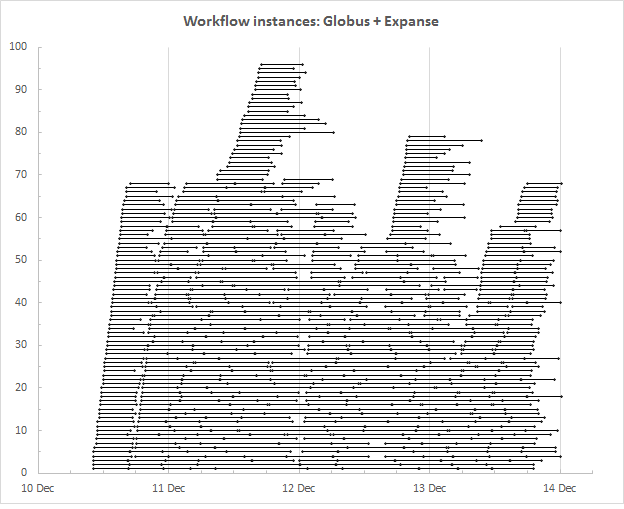I think your suggestion about supporting piped input in AriocE is a good one. It's something we considered in the past but did not implement. Perhaps it needs to be revisited.
But first: please let me try to set out some context. It's a bit TLDR, but here goes...
1) Functionality
The primary reason why AriocE does not support piped FASTQ input has to do with the way it parses input data.
As you probably know, the FASTQ format is awful. It wastes space on redundant syntax. It fails to provide for descriptive metadata about its own contents or about the data it contains. It contains stupid syntactical elements, including a separator character that can also appear in data. In a world of XML, XSD, json, and so on, FASTQ is an archaism that is overdue for oblivion. Unfortunately, this is the world of bioinformatics, where software engineering is regarded as a lesser discipline, so we're stuck with FASTQ (and FASTA, and SAM, and VCF) for the duration.
The point of this rant is that AriocE deals with FASTQ by making two passes through FASTQ input. The first pass "sniffs" the data in order to determine things like how base quality values are encoded. It then "rewinds" and encodes the data sequentially. I suppose we could hack something together that would support this functionality with a serial input stream, but it's easier just to use a file handle and let the OS worry about buffering the input data.
2) Performance
In our experience, the conventional wisdom about piped I/O being significantly faster just doesn't hold up in practice. There are two reasons for this. One is simply that hardware and OS considerations contribute more to overall speed than does sequential I/O buffering (as in a pipe). If things are running slow and disk I/O is the bottleneck... well, fast disk devices (e.g., NVMe) are widely available and inexpensive.
The other is simply that AriocE is typically used as part of a toolchain (e.g. trimming, encoding FASTQ, aligning, filtering, etc.). Any incremental speed improvement associated with using pipes is dwarfed by the overhead of data ingress and egress, compressing and decompressing data, and running the software tools themselves. Furthermore, when the toolchain fails it can be restarted at the point of failure only if intermediate data is available in files.
3) Syntax
I suppose I can appreciate the "elegance" of writing a chain of piped commands in a Linux command line. On the other hand, I recognize the downside in regard to error handling, debugging, and so on. All things considered, supporting piped input syntax hasn't been a priority.
Having said all that: maybe at some point we can take another look at implementing AriocE to handle piped input. At the very least, the program ought perhaps to fail more gracefully if you try it!
Richard Wilton

First of all, thanks for creating Arioc and publishing it under a permissive license !
I have seen a closed issue about fastq.gz and i am in a similar situation, i would like to remap bam files without having to go bam > uncompressed fastq > very large arioc format > uncompressed sam > bam. With my WGS data this really is a pain both in disk space and in network utilization.
I figured that i can use a named pipe to get the output file from AriocP directly into samtools, that works great. However, i could not figure out a way to do that with the input for AriocE. Whenever i use a named pipe as input it balks at me with "Bad address".
My IT guy tells me that you open the input as "file" not as "stream" so this can not easily work. Thus my question: Is there a chance you could make AriocE accept piped fastq data ? As far as i understand that its just a different way of opening the input data, i presume you don't do any random access on the input fastq(s).
This would make AriocE accept any input that one can convert to fastq and stuff into a pipe, which would be great!